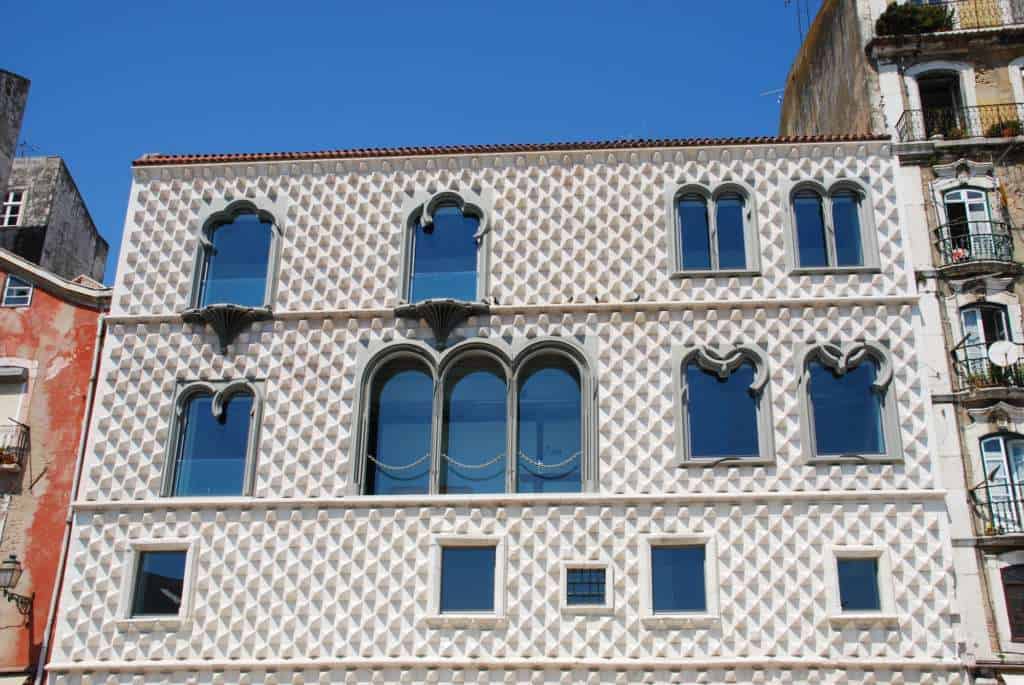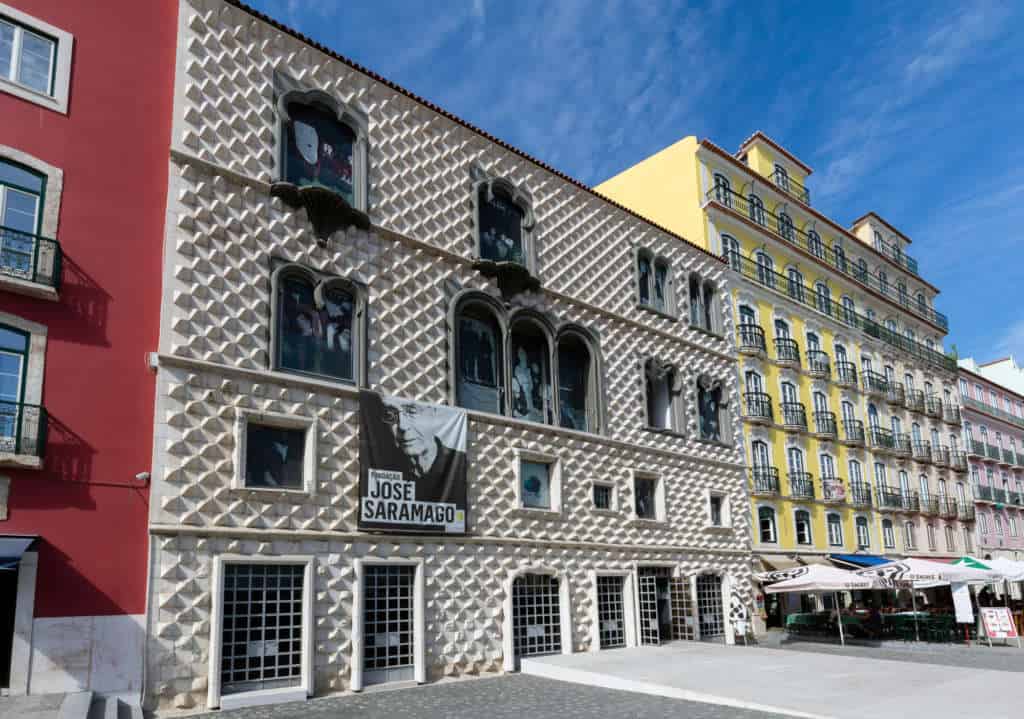Casa dos Bicos, or translated as “house of thorns”, is one of the most charming townhouses within the center of Lisbon. It owes its uniqueness to its miraculous rescue during the 1755 earthquake. This fact allowed the building to remain unchanged since its construction several centuries ago.
During the earthquake, only parts of the facade were damaged, and it was rebuilt as a priority based on pre-disaster drawings. Today, archaeological excavations are being carried out within the building, uncovering the remains of the Roman peoples who inhabited the area and the Moors who occupied it. Today, Casa dos Bicos is also home to the foundation of Portuguese Nobel laureate in literature, José Saramago.
History of Casa dos Bicos
Numerous historical records indicate that starting in 1506, a certain Afonso de Albuquerque, later the first governor of the Portuguese Indies and overseas viceroy, owned buildings in this area of the city, as well as holding title deeds to the land of the then lower-class neighborhood now named Alfama. Fifteen years later, the son of the magnate, Brás de Albuquerque, traveled to Italy in the company of his infanta Beatrice, Duchess of Savoy, and spent several years there, where he observed new trends in the architecture of the Apennine Renaissance.

Palazzo dei Diamanti in Ferrara, Italy, strongly resembles Casa dos Bicos
The young nobleman, a courtier known for his humanistic cultural inclinations, was responsible for, among other things, the construction of the Quinta da Bacalhôa, which today serves as an exquisite vineyard in the Setúbal area. His ideas are thought to have been influenced by city palaces such as the Palazzo dei Diamanti in the Ferrara area in connection with a facade composed of thousands of small diamond-shaped pyramids. In the 1620s, Brás de Albuquerque returned to Portugal and began work on his masterpiece, then called Casa dos Diamantes (House of Diamantes). It is assumed that construction of the Casa dos Bicos was completed in 1523.

The townhouse remained in the hands of the Albuquerque family until its memorable destruction in the mid-1800s. Several decades had to pass before Francisco Menezes e Albuquerque, due to debts, allowed the house to be sold at public auction. It was bought by Caetan Lopes da Silva, a fishmonger unknown to the wider population. Under a court ruling, however, the mansion was returned to the Albuquerque family after one generation. In 1873, the last heir, due to debts, disposed of the inheritance to another seafood fisherman, Joaquim da Silva, who began using the structure as a warehouse for salted cod. The monument remained in private hands until the 1960s, when it was taken over by the Lisbon City Council. The board commissioned architect Raul Lino to adapt Casa dos Bicos, then known as Casa de Goa, for use as a museum.

Today the windows are filled with characters from Jose Saramago’s books
Details and location
Casa dos Bicos is located in the center of Lisbon. Right next to Se Cathedral or Praça do Comércio. Despite this, many visitors miss the Bacalhoeiros street formerly filled with storerooms of the all-too-familiar bacalhau, and today full of small pubs and hostels. Casa dos Bicos is located in the plaza at the end of the street, tightly adjacent to other buildings, but thanks to the finish of the facade, it can be spotted from quite a distance. It is a rectangular building of four stories, with unique decorations and intriguing tile work. The main facade to the south is decorated with diamond-shaped protuberances. The ground, second floor houses numerous portals and windows with decorative stones.

Above the foundations, tourists will notice four simple doors of different proportions and asymmetrical distribution, so some are rectangular and two are marked by convex arcades. On the next level, the visitor will find four rectangular windows of different proportions, a certain irregularity in spacing. The third and fourth floors are distinguished by double or even triple rounded doorframes based on Manueline elements. The interior has been significantly altered from early concepts. It includes a steep, light marble staircase with bold balustrades and contrasting black walls.

Jose Saramago Museum and Foundation
An archaeological exhibition covering more than two thousand years of the city’s history has been set up on the first floor of the mansion. The exhibition shows the preserved foundations, remains from the period of Roman rule in the then settlement called Olisipo, which was a center for fishing and the production of garum, a fish sauce popular throughout the Roman empire. Excavations have further confirmed that the ancient buildings were absorbed into the medieval walls. All this can be admired through the glass floors and walls inside the townhouse.
In 2012, Casa dos Bicos also became home to the José Saramago Foundation (Fundação José Saramago) and a permanent exhibition on the author’s life. It includes a studio, a store with all of the author’s work on sale in multiple languages, as well as an auditorium and library. The room where the studio is located houses some of his early notebooks when the author was still a student, his desk, books and typewriter. One room is furnished with a small cinema room where a film is shown depicting the writer’s life story from a child from a poor peasant family to a Nobel Prize winner.

